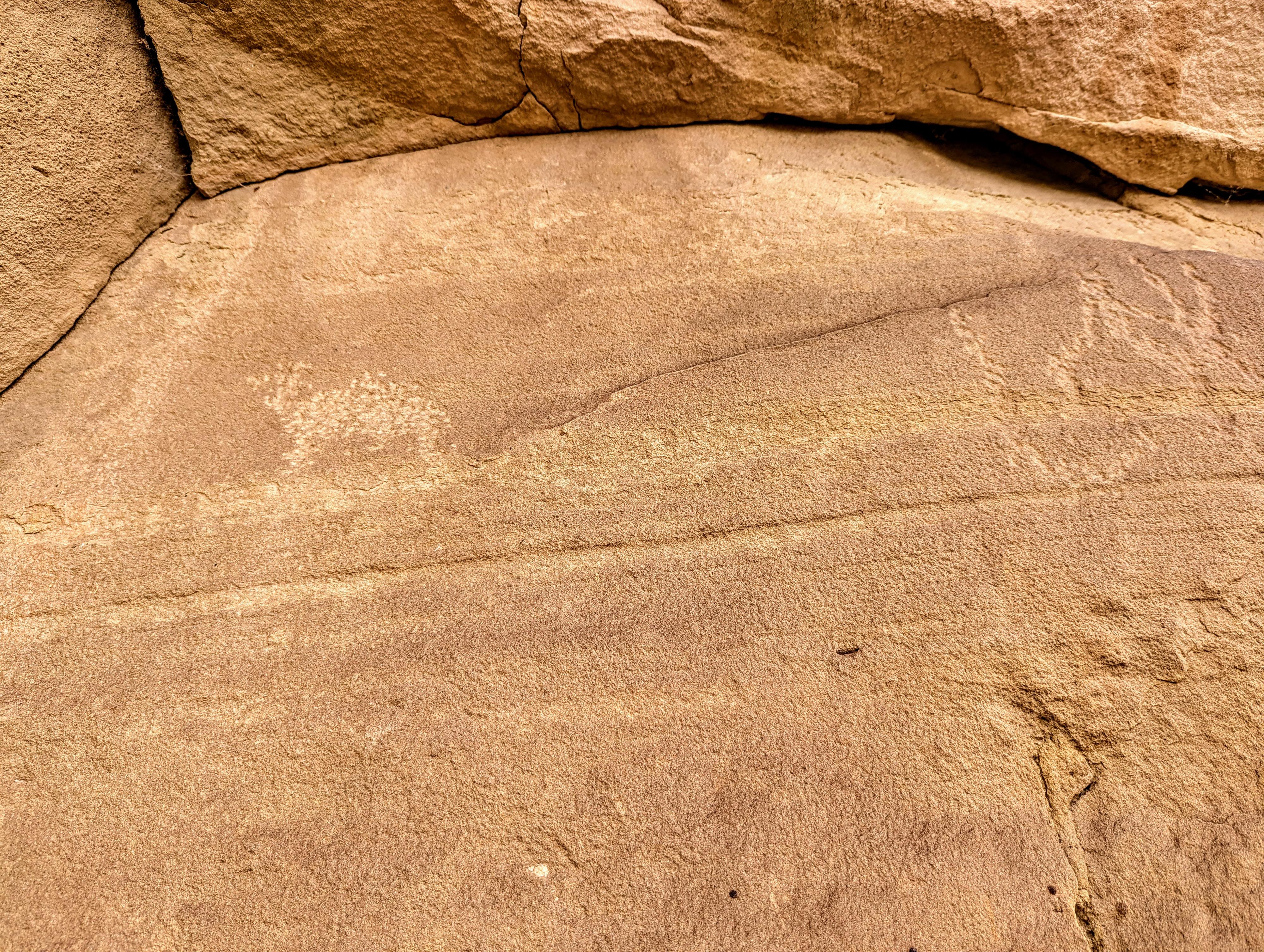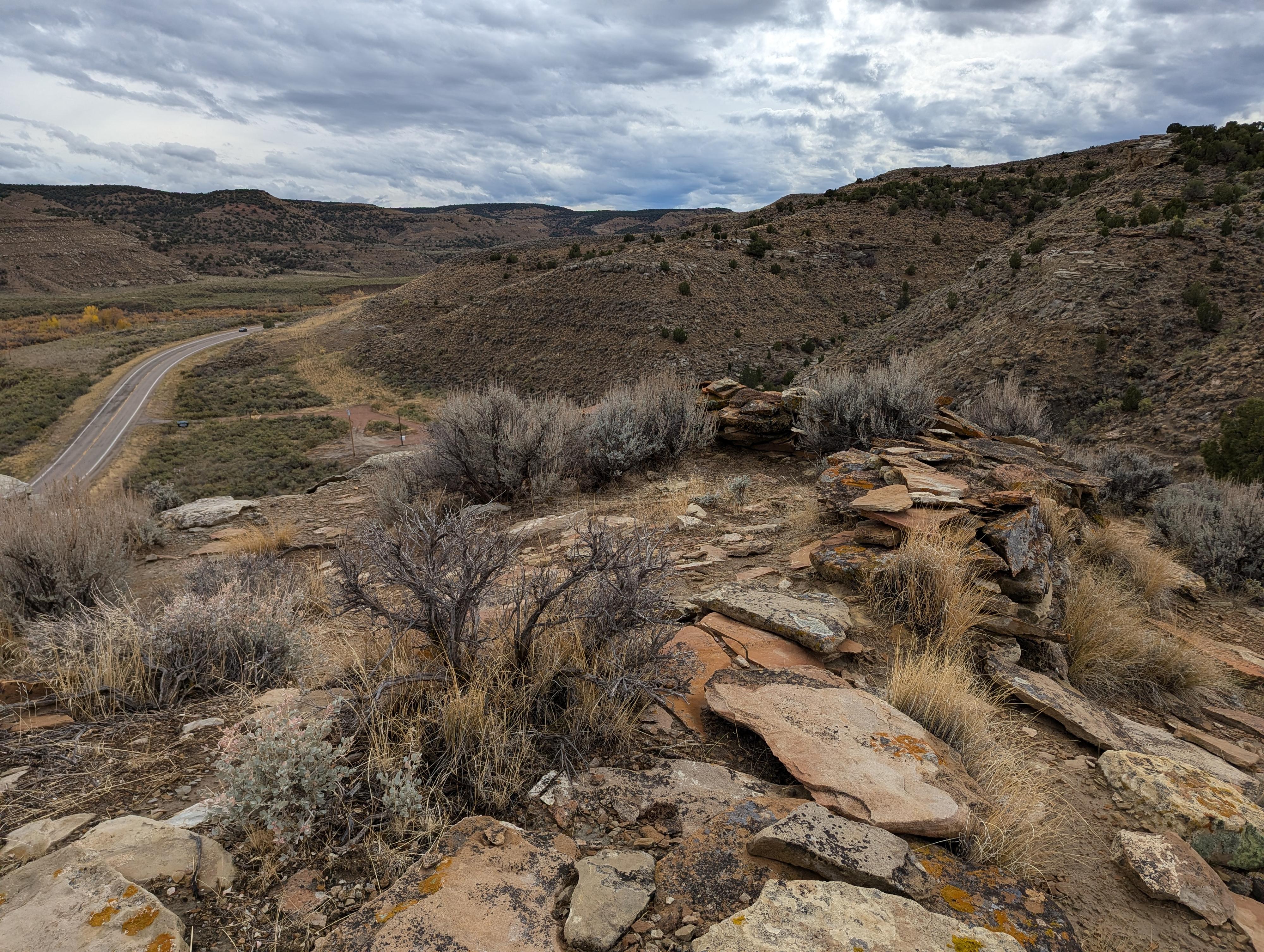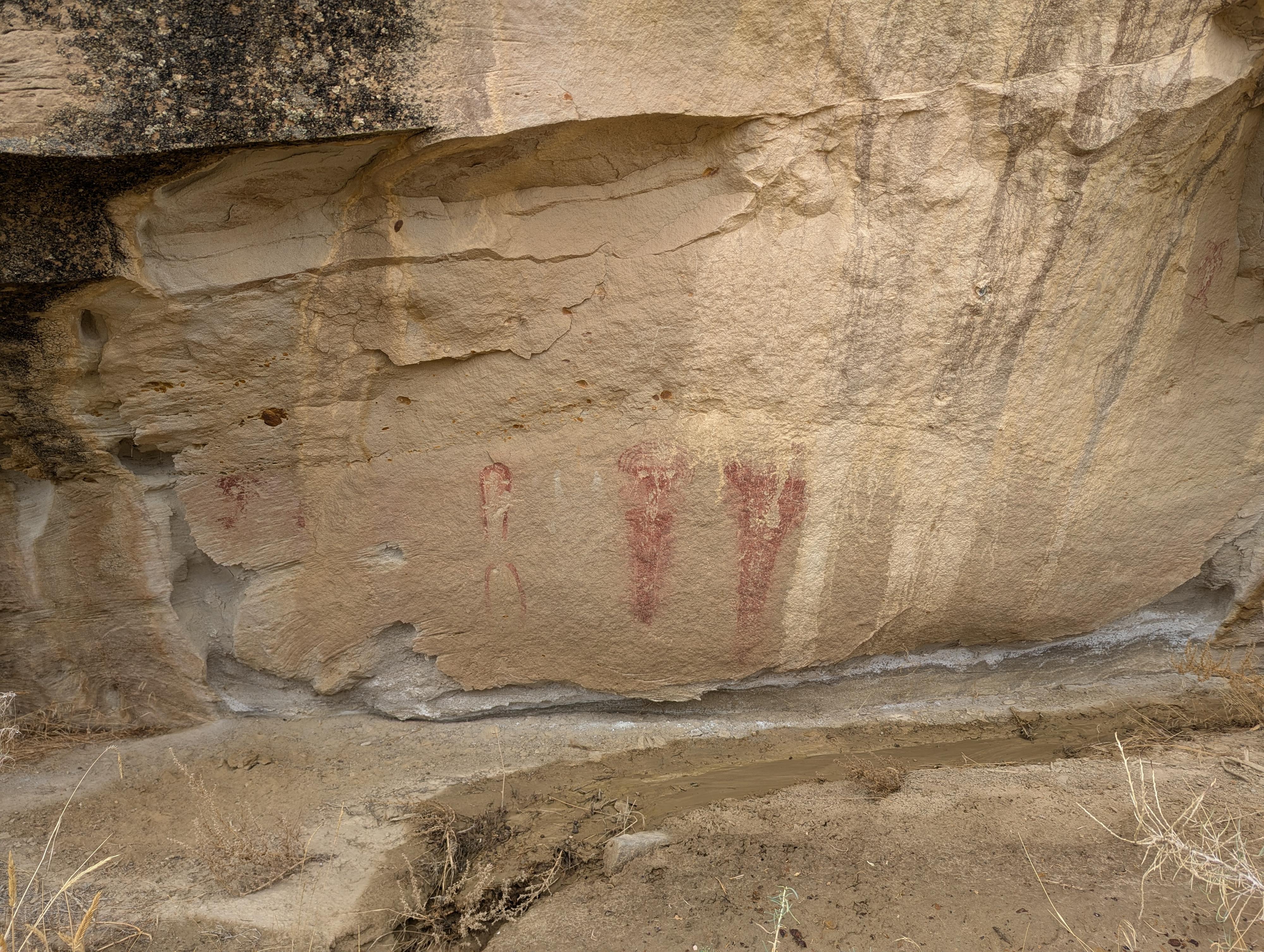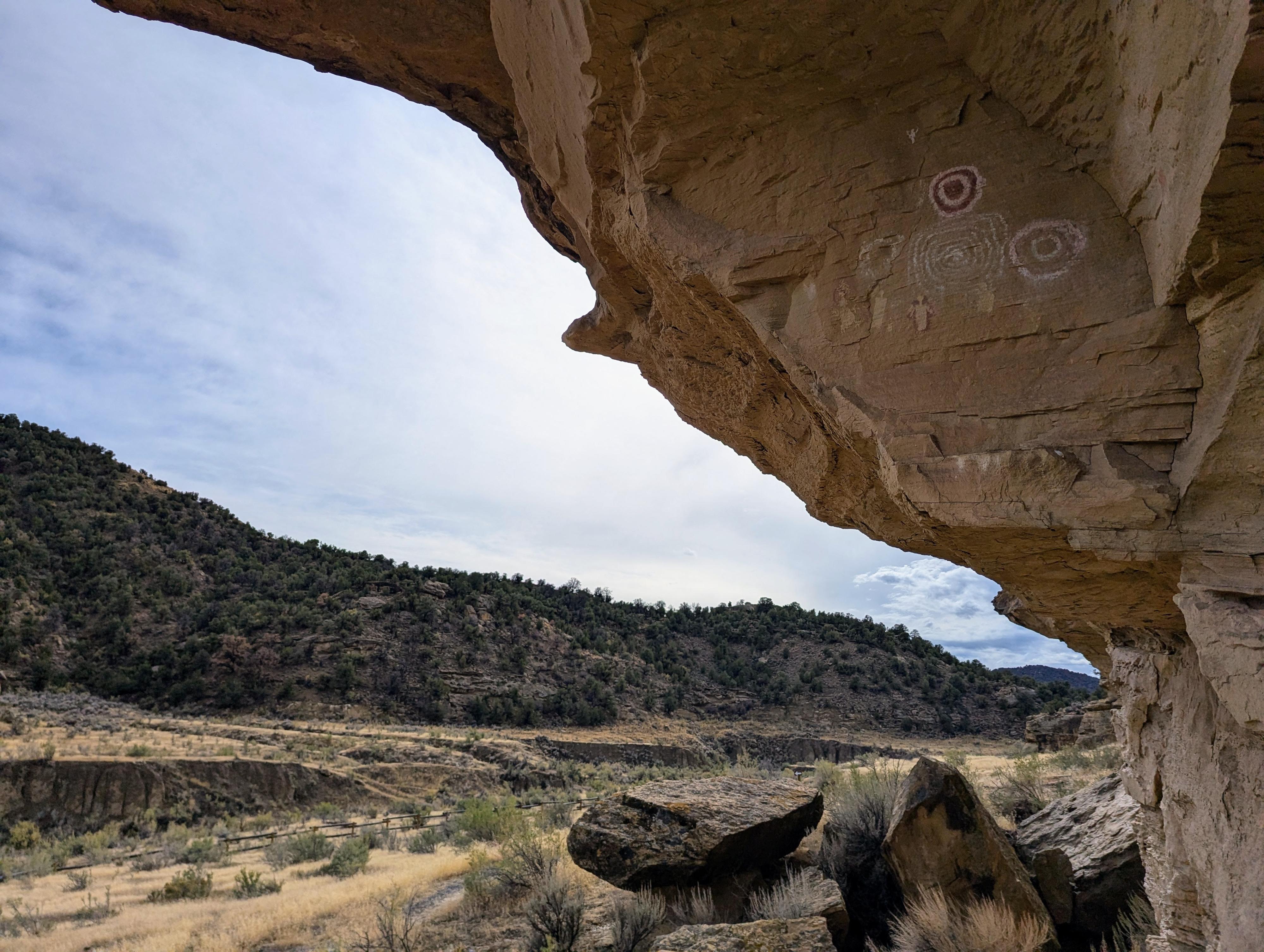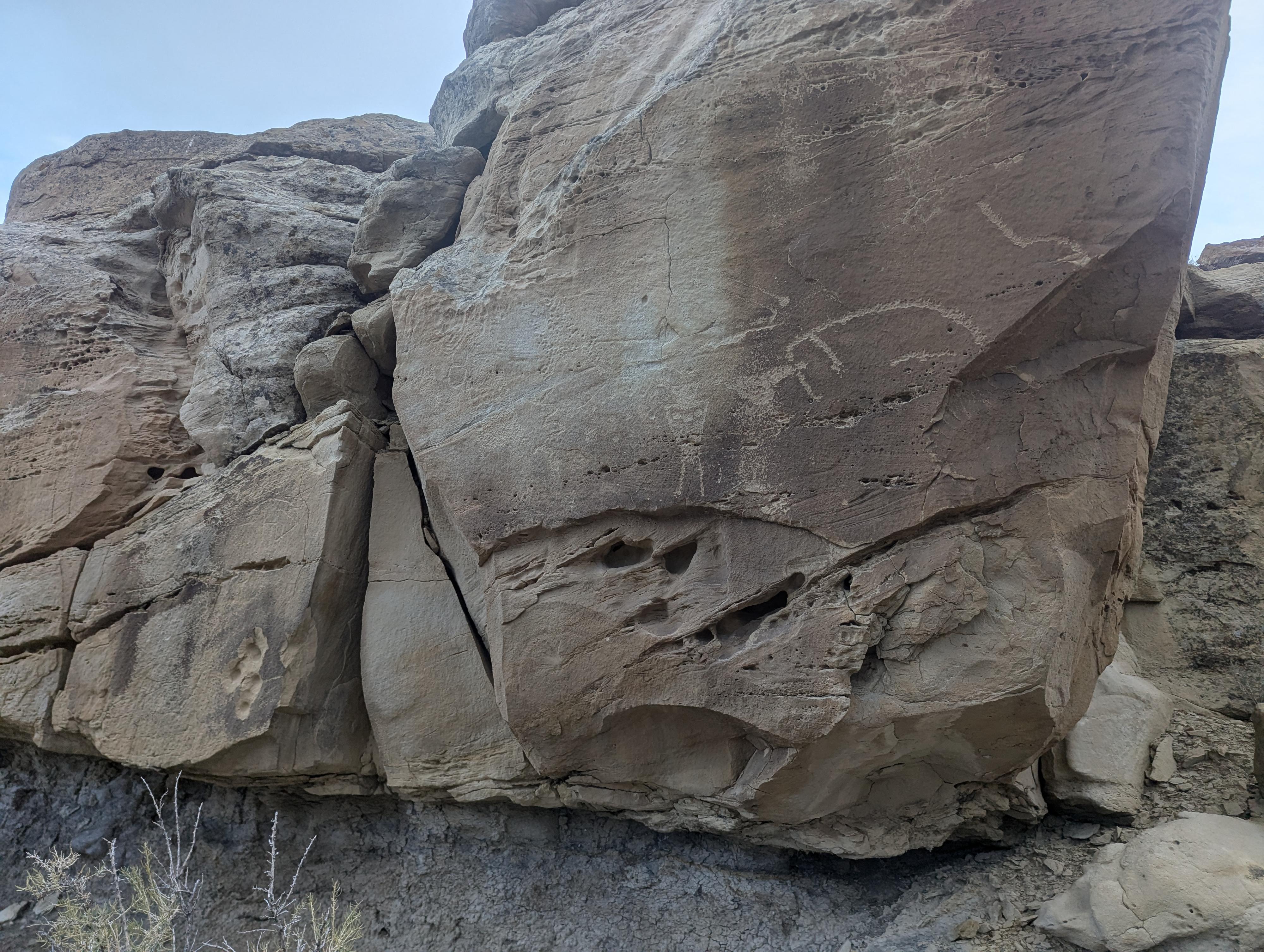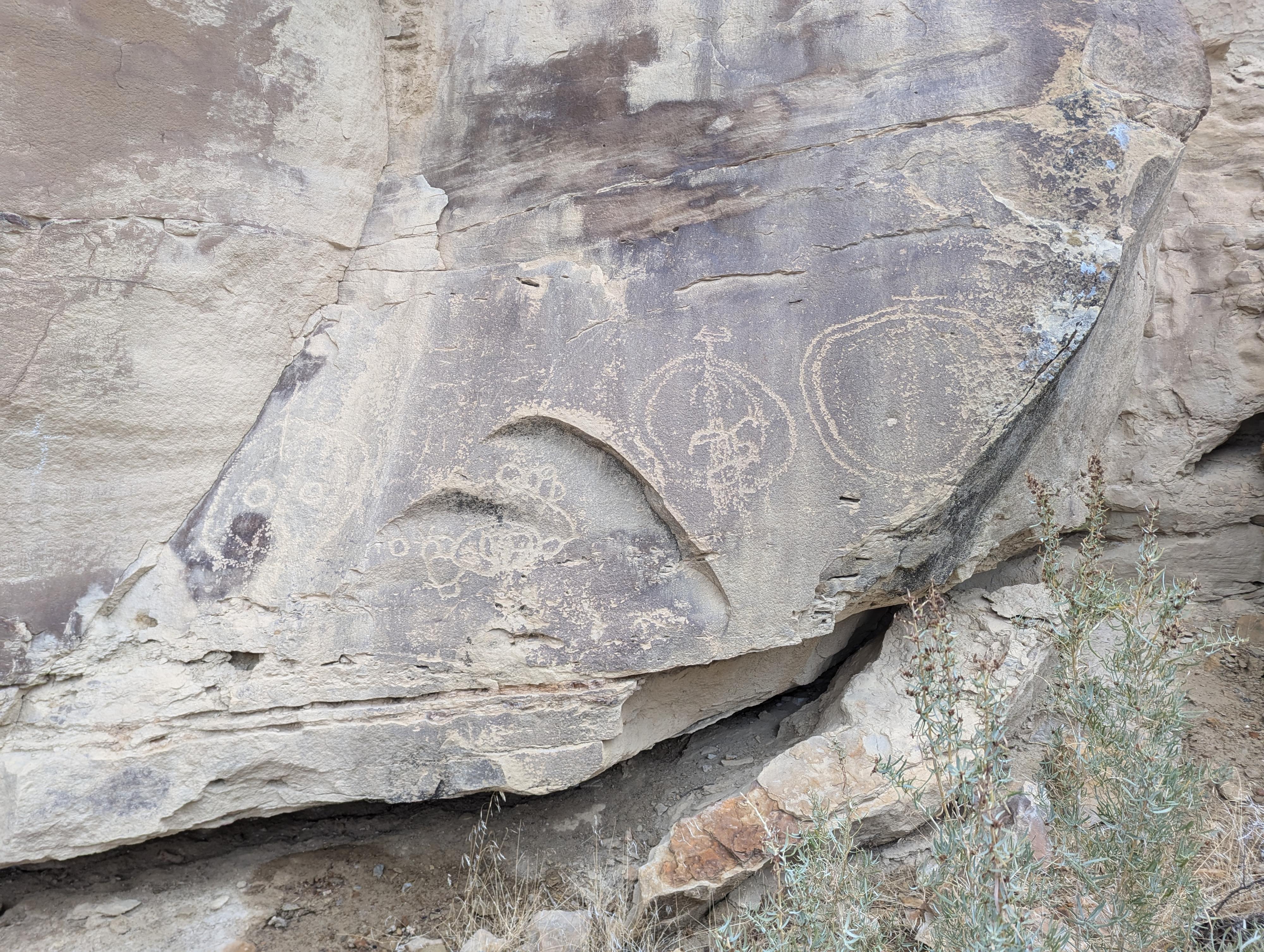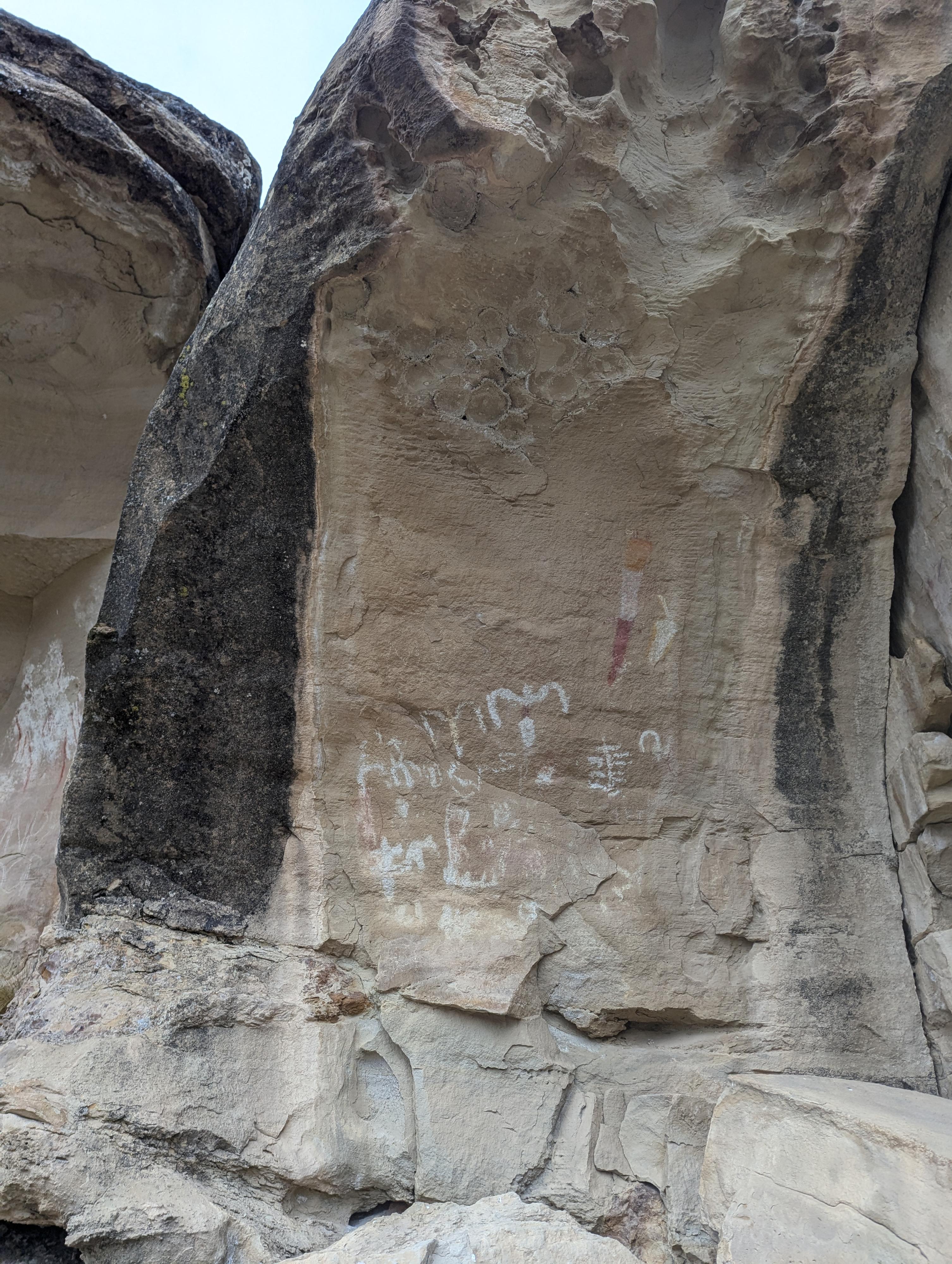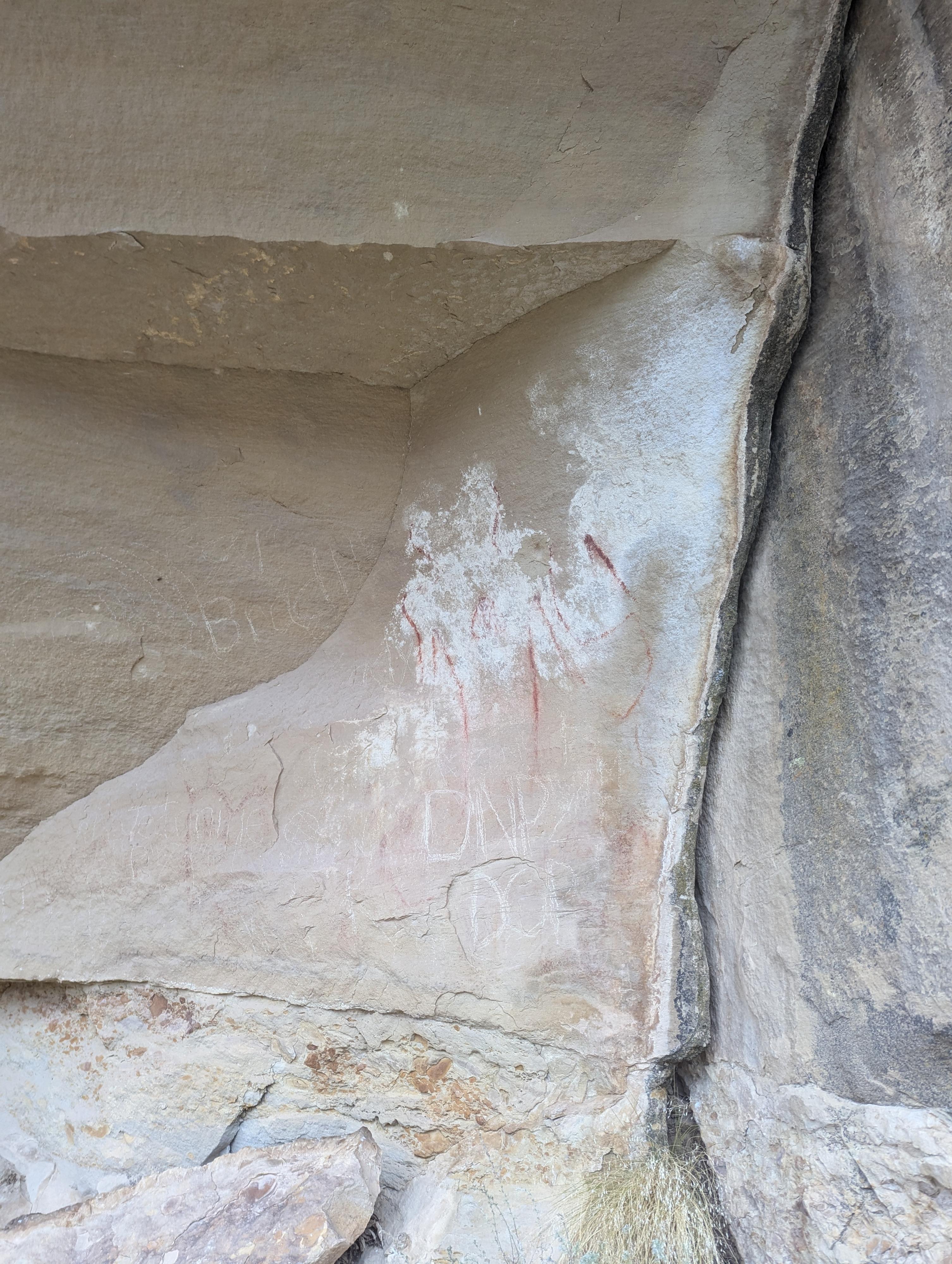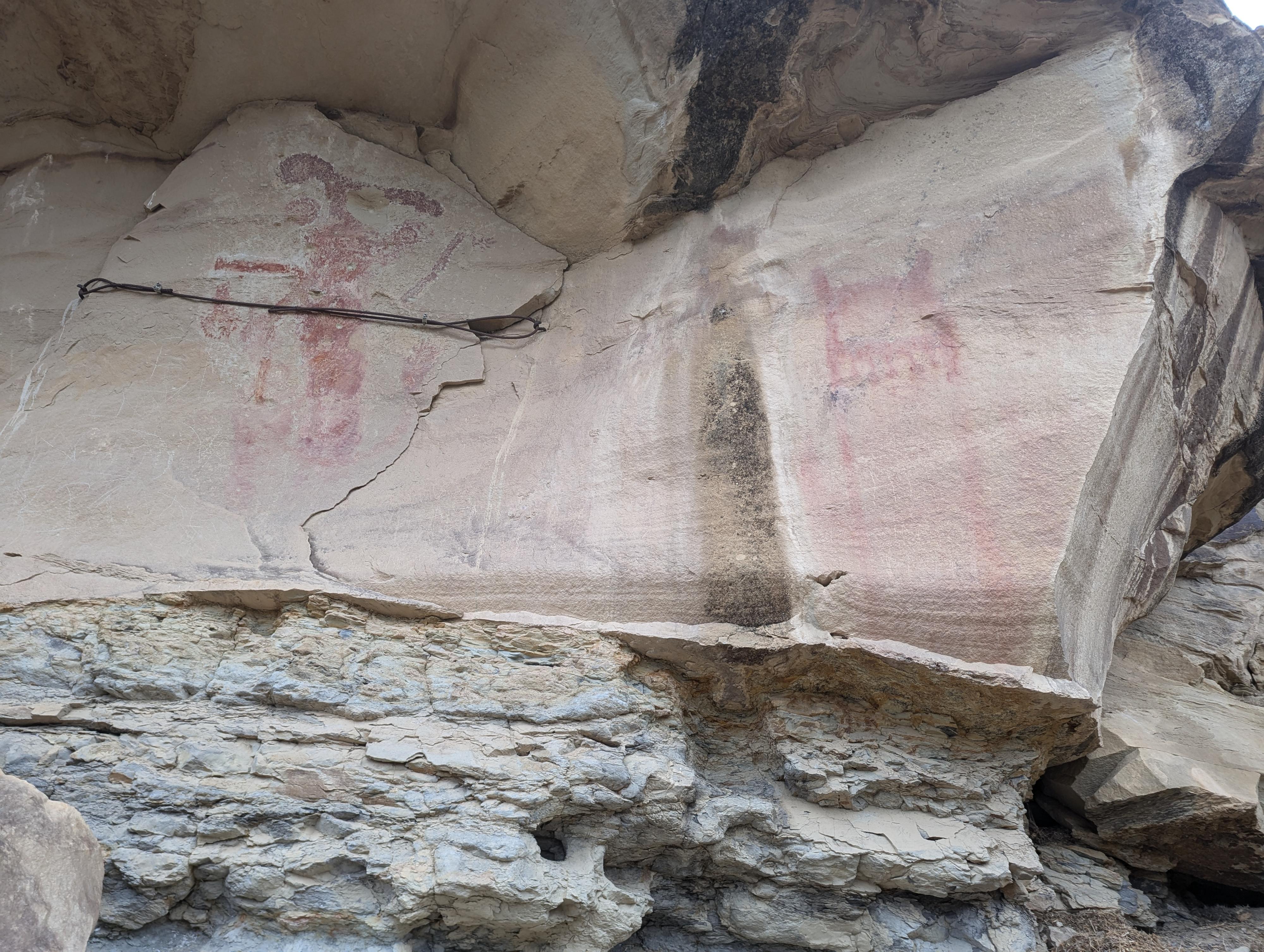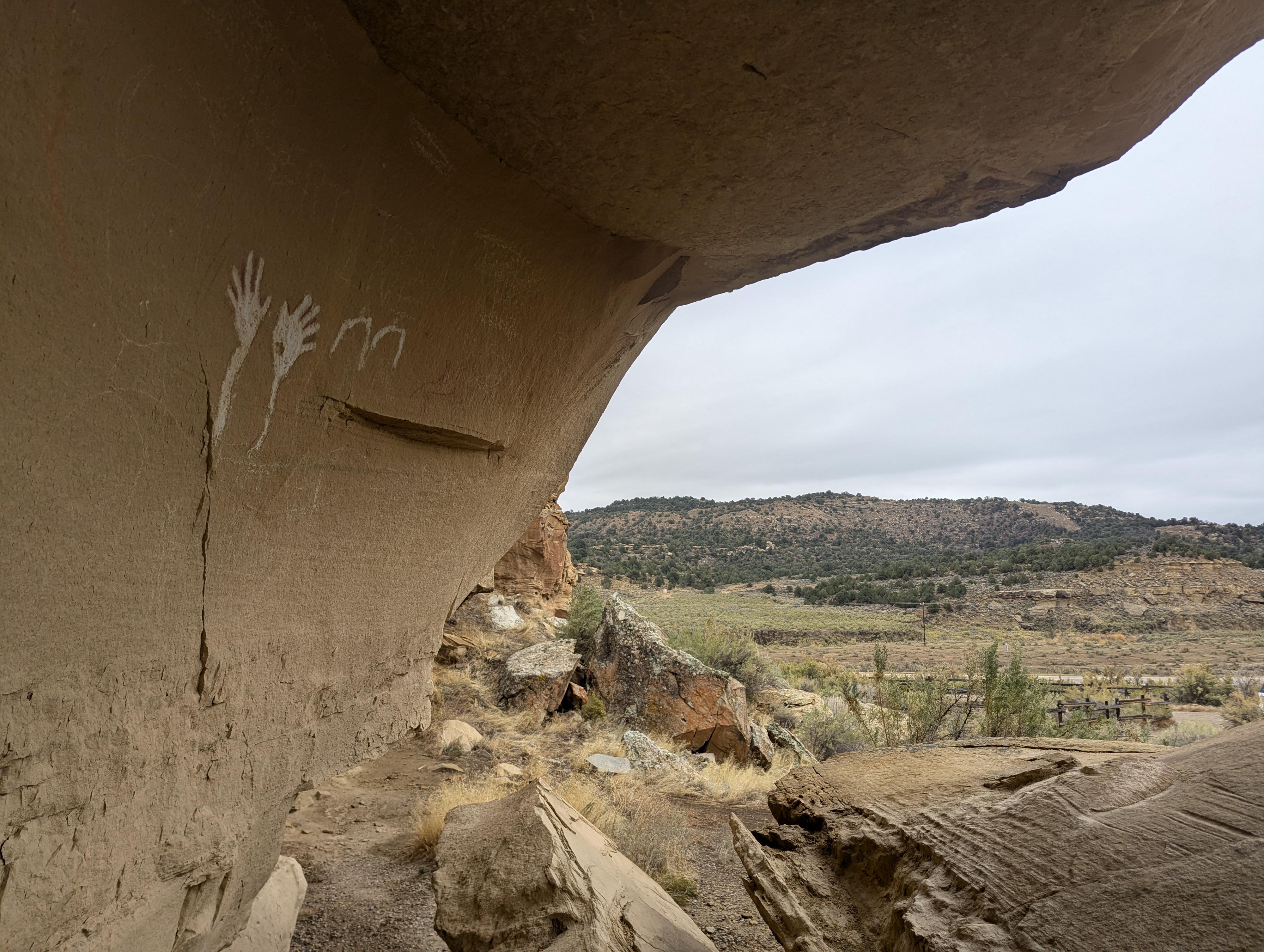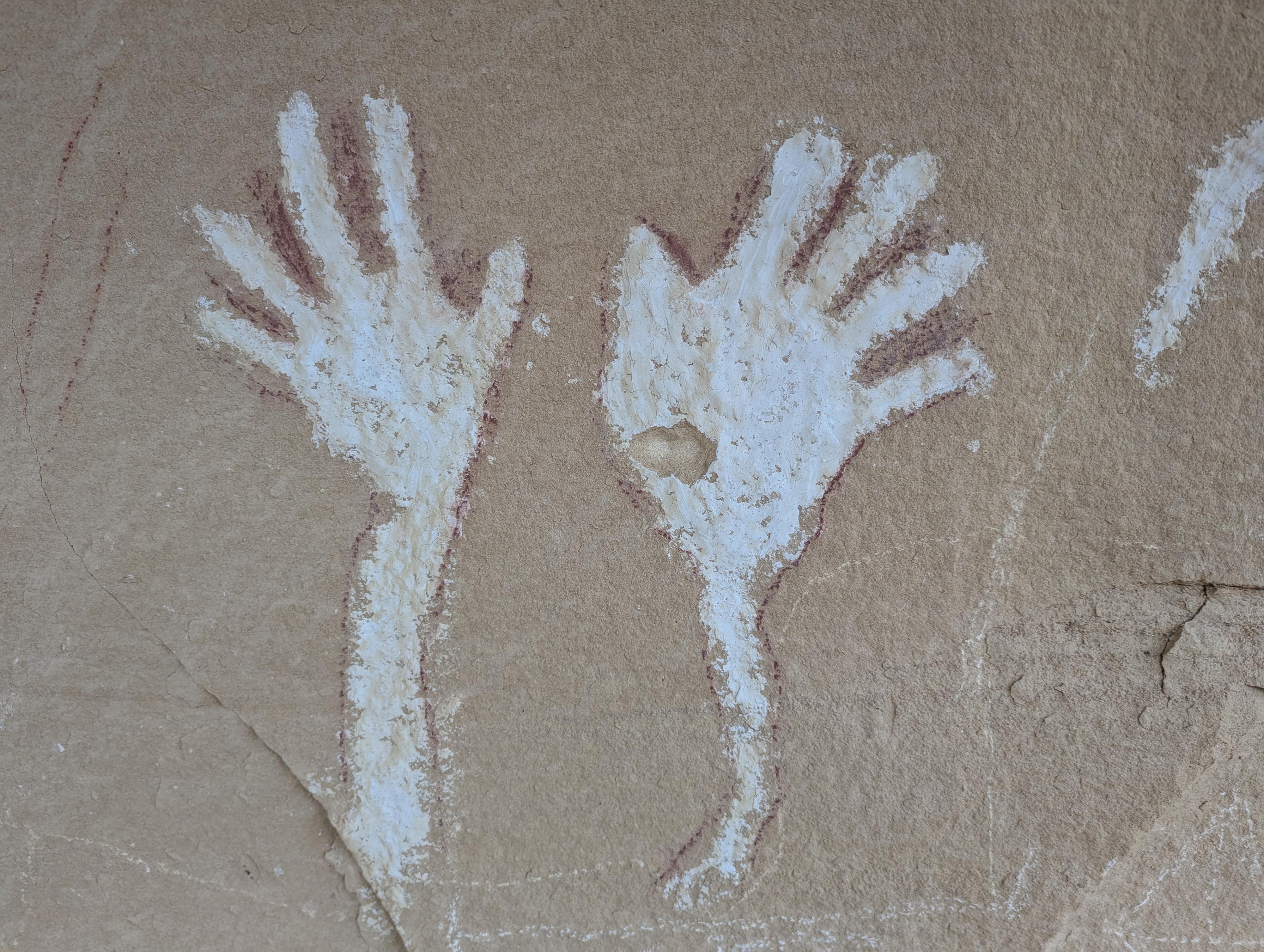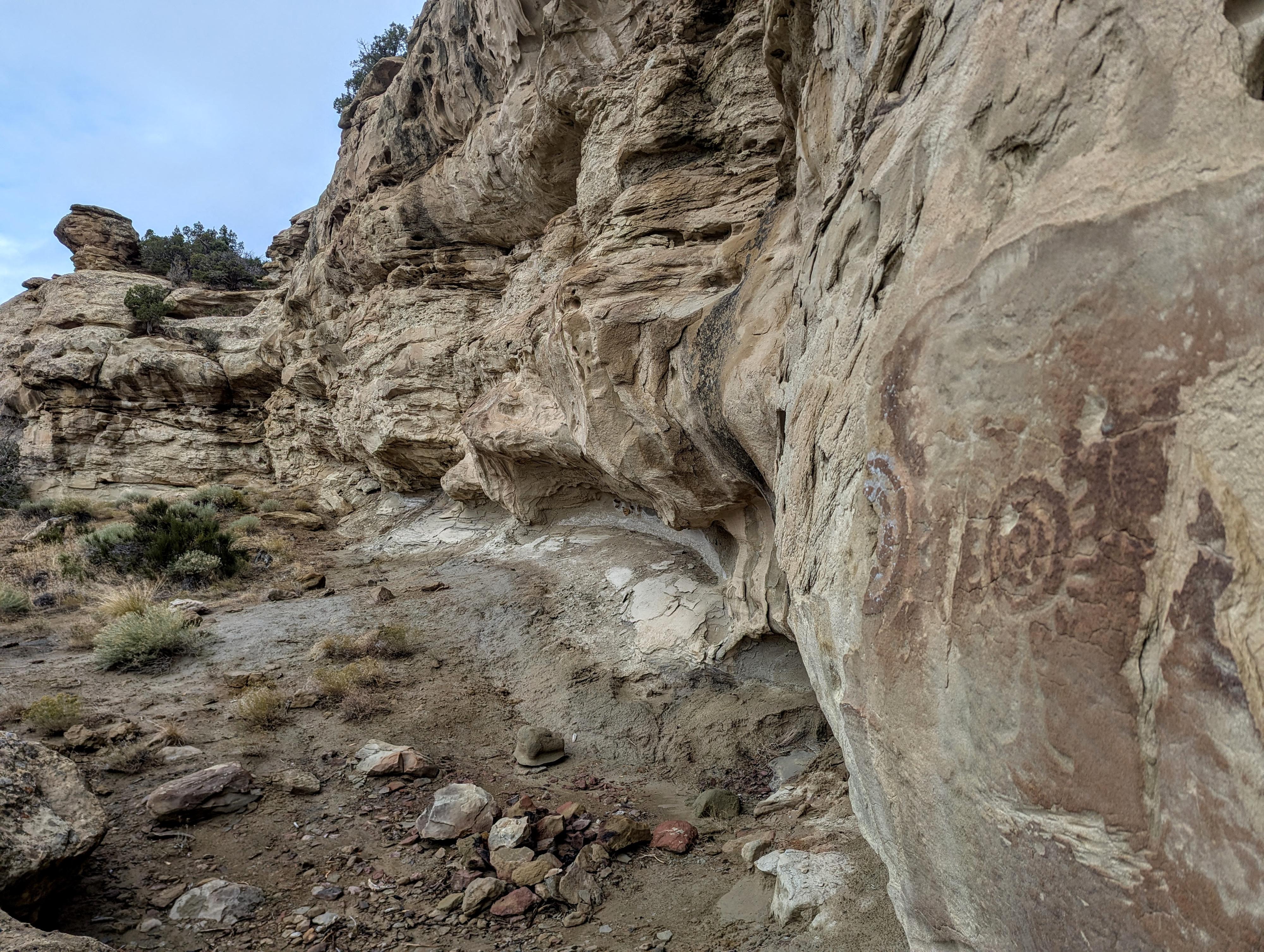
 Canyon Pintado
Canyon Pintado
Rangely Colorado
Overview
|
Tue 48 | 22 |
Wed 54 | 27 |
Thu 55 | 28 |
Fri 53 | 26 |
Sat 52 | 24 |
| View Full Weather Details | ||||
|
Tue 48 | 22 |
Wed 54 | 27 |
Thu 55 | 28 |
Fri 53 | 26 |
Sat 52 | 24 |
| View Full Weather Details | ||||
Canyon Pintado, located in the northwestern part of Colorado near the town of Rangely, is a historic and archaeological area filled with rock art and cultural remnants. Named "Painted Canyon" for its abundance of rock art, the area is home to thousands of petroglyphs and pictographs left by the Fremont and Ute peoples, dating back over a thousand years. These intricate and symbolic drawings offer insight into the lives, beliefs, and stories of the Indigenous people who once inhabited the region. Canyon Pintado lies within an expanse of sandstone cliffs, mesas, and valleys that constitutes the protected Canyon Pintado National Historic District.
Most of the sites require very short hikes to visit, and it is possibly to visit all the sites in a half-to-full day. Those interested in spending some time at the sites might want to budget a couple of days. We spent an afternoon visiting some sites, camped in Rangely, and visited more sites the next day. I thought breaking it up was a nice way to visit.
"Halfway down this canyon toward the south, there is a very high cliff on which we saw crudely painted three shields or chimales and the blade of a lance. Farther down on the north side we saw another painting which crudely represented two men fighting. For this reason we called this valley Cañon Pintado."
-Fray Escalante
Getting There
See the description below for driving directions. The trip assumes starting in Rangely Colorado.
Route
Rock art and historic sites are fragile, non-renewable cultural resources that, once damaged, can never be replaced. To ensure they are protected, please:
- Avoid Touching the Petroglyphs: Look and observe, BUT DO NOT TOUCH!
- Stay on the Trails: Stay on the most used trails when visiting sites, and don't create new trails or trample vegetation.
- Photography and Sketching is Allowed: Do not introduce any foreign substance to enhance the carved and pecked images for photographic or drawing purposes. Altering, defacing, or damaging the petroglyphs is against the law -- even if the damage is unintentional.
- Pets: Keep pets on a leash and clean up after them.
- Artifacts: If you happen to come across sherds (broken pottery) or lithics (flakes of stone tools), leave them where you see them. Once they are moved or removed, a piece of the past is forever lost.
CO-139 (Paved road)
From downtown Rangley, head east on CO-64. On the eastern edge of town is the junction with CO-139, which heads south to Loma. Follow CO-139 as it heads south. The sites below have approximate milepost markers for the trailhead. As of 2024, all but Camel Ridge Site are well signed.
Camel Ridge Site (Milepost 70.5 on the right)
The first site, Camel Ridge Site, is about 1.4 miles from the junction of CO-64 and CO-139 on the right side of the road. This was the only site on our visit that didn't have a large sign, but only a small wooden one on the fence. Follow the social trail that goes up the wash, then up left to the cliff band. The small panel is just above eye level. Though short, this is one of the steepest trails.
Lookout Point (Milepost 68 on the right)
A signed side road goes a short distance to a parking area. The trail leaves the parking area and switchbacks up to the ridge and Lookout Point proper. We found this site quite fascinating, as it is believed to have been a solar calendar. From the BLM Sign:
Hoodoo Site (Milepost 63.2 on the right)
Named for the small rock towers here, Hoodoo Site has a short trail that goes over to a wooden fence around the site.
East Four Mile (Milepost 61.3 on the left)
This is a large site, and the longest hike of the sites along CO-139, though still a fairly short hike at around a mile. The trailhead has a large parking area and pit toilet.
The trail seems to follow an old road east for a couple of minutes before crossing East Four Mile Draw.
Just after crossing the draw, the trail splits. Right visits Sun Dagger Site. This pictograph was one of our favorites, and faces east at the end of the trail. Like Lookout Point, this site may have an celestial purpose. From the BLM Sign:
Back from the junction, if you go left, you will come to a signed old cabin site. There isn't much left at this point.
Just past the cabin, the trail forks again.
Right
Right goes a short distance to the Hanging Hearth Site. This site was excavated in the early 1990s and has remnants of several periods.
Left
Left heads west, crosses a deep wash, then visits to rock art sites. Both are signed and easy to find.
State Bridge Site (Milepost 59.7 on the left)
This is a small site. From the trailhead, the trail heads southeast and around to the south side of the small ride. The panel is signed and near the point of this ridge.
Cow Canyon Site (Milepost 57.8 on the left)
This site is a bit off the paved road. Turn off the paved road and reset your odometer. The road, when dry, is suitable for most vehicles. On our visit, there were many wild horses wandering along the road.
The road is heading east. Turn right at 0.2 miles from pavement, now heading south. Continue south for another 0.8 miles. Turn left, just after the second cattle guard, to a parking area and the site.
White Birds Site (Milepost 56.6 on the right)
From the parking area, it is a short, steep trail up to the pictograph panel. There are great views from the panel over the valley.
Kokopelli Site (Milepost 56 on the right, but parking is on the left)
One of the most famous panels in the canyon, this is visible from the road, or a very short hike to a view spot closer.
Wavy Hands (Milepost 53.5 on the right)
Wavy Hands is what I thought was the most interesting panel in this section of Canyon Pintado. A short trail goes to the Wavy Panel on the left. It is a fascinating and distinct pictograph. There is another short trail that goes to the right which also visits another dramatic pictograph up on the cliff face. I wonder if the two art pieces were the same artist. Both are quite unique and fascinating.
CR-23 (Dirt road)
On the east part of Rangley, turn south on White Ave. Follow White Ave as it heads south and leaves town. It becomes Dragon Road, enters BLM land and turns to dirt. Watch for mileposts, but all the sites were well signed as of 2024. It is about 5.5 miles from Rangley to the first site, the Shield Site.
Shield Site (Milepost 5.6 on the left)
A side road on the left leads to Shield Site. Follow this side road about 0.3 miles to a junction. Go right at the junction, immediately reaching the Shield Site trailhead. The road is generally suitable for all vehicles, but could easily be walked if needed.
From the Shield Site trailhead, follow the trail just a couple of minutes (600-700 ft) to where the Shield Panel is visible on the cliff to the right.
Fremont Ridge Site (Milepost 9.7 on the right)
Turn off onto the Fremont Ridge Site side road. It is a bit rough early on. Stay on the main dirt road for 1.3 miles to a junction. Go left at the junction, following it another 0.6 miles to its end and a tight turnaround. Not recommended for trailers or bigger vehicles.
From the end, follow the signed trail that heads up to the ridge and along the east side of the rock cliffs. The petroglyphs are on a flat, east-facing section of the cliff face.
Crooks Brand Site (Milepost 10.1 on the right)
Turn off the main county road and go a short distance (0.1 miles) to a junction. Go right here, before the oil well. Follow the dirt road to its end. Park either just before or just after a wooden fence.
From the parking area, head to the cliffs. On the right side of the cliff band is Crooks Brand and some Ute horses carved into the rock. If you head left, you come to some graffiti and a very vandalized pin-up panel.
From the BLM has great information about the site:
The petroglyphs here at Crook's Brand have been interpreted by a Ute Elder as evidence that the Ute people continued to return to and hunt on their homeland long after their banishment to reservations in 1882.
All though they are commonly referred to as "Rock Art", petroglyphs and pictographs hold a much deeper significance to the Native Americans who created them. Transcending aesthetics, petroglyphs hold deep spiritual value, tying landscapes and oral traditions by documenting the relationships between Tribal homelands and associated landmarks. Movements and migrations of Ancestors can be described and petroglyphs can reinforce the commitments to care for the land and communicate it to subsequent generations.
GENERAL CROOKS BRAND
This sites namesake, "Crook's Brand" is featured prominently in the photo to the middle/right. General George Crook was a career United States Army officer noted for his distinguished service during the Civil War and the Indian Wars. According to a local historian, the panel was created by a Ute scout who had worked for General Crook. Crook is known to have hired Ute and Shoshone scouts during this time. Legend links the panel to a traditional Ute story of two young men who were able to sneak into Crook's Wyoming camp and steal a number of horses, including one bearing Crook's Brand. In 1887, Crook was summoned to Meeker, CO to help resolve a conflict involving Utes returning to hunt, but Crook declined direct involvement in the matter.
HISTORIC ERA INSCRIPTION & MODERN ERA CHACON PANEL
"WE ARE HERE BECAUSE WE AINT IN HELL BUT WE ARE ON OUR WAY" reads a panel believed to be etched sometime in the 1800s by a passing cowboy. The second panel at this location, now vandalized and riddled with bullet marks, is a Pacomio Chacon original. Chacon was a Hispanic sheepherder who created a series of pin-up style petroglyphs in the mid 1970s in this area and whose aspen carvings can be found throughout Colorado.
Carrot Men Site (Milepost 11.6 on the right)
This was probably my favorite site that we visited in Canyon Pintado.
Turn off at the signed Carrot Men site side road at about milepost 11.6. Follow the side road about 0.3 miles to a parking area on the left, which is the trailhead.
From the trailhead, follow the trail heads south and down a gully. The trail leaves the gully on the left briefly and then heads back to the site. It is a dramatic location with a spring and overhanging walls. It is easy to see this as a place to spend time on a hot summer day.
The BLM information sign:
The distinctive style of the rock art before you identifies it as part of the Fremont culture; these prehistoric peoples lived throughout present-day Utah and Western Colorado from approximately 800 to 1150. Their life style included hunting, gathering and the cultivation of crops such as corn.
It is unusual to find both pictographs and petroglyphs in such close proximity. Petroglyphs are the figures which have been rubbed or pecked into the rock, whereas pictographs are figures that have been painted on the rock surface, often with a soft red iron ore. Note that some of the human-like pictographs have been painted over the older animal-like petroglyphs.
Although this rock art is at least 800 years old, it is still remarkably well-preserved. This fragile resource could easily be defaced by thoughtless vandalism. The 1906 Antiquities Act was enacted to protect this and other similar resources by prohibiting defacement, theft and excavation. This site has been placed on the National Register of Historic Places to offer it a greater degree of protection and recognition as part of our irreplaceable heritage. Please help us protect it.
| Camel Trailhead |
12T 690029E 4437703N 40°04'05"N 108°46'18"W |
| Camel Panel |
12T 689997E 4437616N 40°04'03"N 108°46'19"W |
| Lookout Point Trailhead |
12T 690085E 4433487N 40°01'49"N 108°46'20"W |
| Lookout Point Site |
12T 690024E 4433639N 40°01'54"N 108°46'22"W |
| Hoodoo Panel Trailhead |
12S 690023E 4426672N 39°58'08"N 108°46'30"W |
| Hoodoo Panel |
12S 689990E 4426590N 39°58'05"N 108°46'31"W |
| East Four Mile Trailhead |
12S 691506E 4424003N 39°56'40"N 108°45'30"W |
| Sundagger Site |
12S 691884E 4424266N 39°56'48"N 108°45'14"W |
| Four Mile Cabin |
12S 691681E 4424181N 39°56'46"N 108°45'23"W |
| Four Mile Site A |
12S 691598E 4424259N 39°56'48"N 108°45'26"W |
| Four Mile Site B |
12S 691487E 4424173N 39°56'46"N 108°45'31"W |
| Four Mile Site C |
12S 691520E 4424193N 39°56'46"N 108°45'29"W |
| Four Mile Site D |
12S 691642E 4424210N 39°56'47"N 108°45'24"W |
| State Bridge Trailhead |
12S 692820E 4421823N 39°55'28"N 108°44'37"W |
| State Bridge Site |
12S 692899E 4421773N 39°55'27"N 108°44'34"W |
| Cow Canyon Trailhead |
12S 694230E 4417829N 39°53'18"N 108°43'42"W |
| Cow Canyon Site |
12S 694217E 4417858N 39°53'19"N 108°43'43"W |
| White Birds Trailhead |
12S 693924E 4417092N 39°52'54"N 108°43'56"W |
| White Birds Site |
12S 693875E 4417131N 39°52'56"N 108°43'58"W |
| Kokopelli Trailhead |
12S 693959E 4416230N 39°52'26"N 108°43'55"W |
| Kokopelli Site |
12S 693904E 4416254N 39°52'27"N 108°43'58"W |
| Waving Hands Trailhead |
12S 693436E 4412545N 39°50'27"N 108°44'21"W |
| Wavings Hands |
12S 693410E 4412578N 39°50'28"N 108°44'22"W |
| Wavings Hands Site 2 |
12S 693459E 4412590N 39°50'29"N 108°44'20"W |
| Shield Trailhead |
12T 686358E 4431092N 40°00'34"N 108°48'60"W |
| Shield Site |
12T 686205E 4431083N 40°00'34"N 108°49'06"W |
| Fremont Ridge Trailhead |
12S 684496E 4425668N 39°57'40"N 108°50'24"W |
| Fremont Ridge Site |
12S 684582E 4425771N 39°57'43"N 108°50'20"W |
| Crooks Brand Trailhead |
12S 681602E 4426451N 39°58'07"N 108°52'25"W |
| Carrot Men Trailhead |
12S 680247E 4424036N 39°56'50"N 108°53'24"W |
| Carrot Men Site |
12S 680188E 4423976N 39°56'48"N 108°53'27"W |

